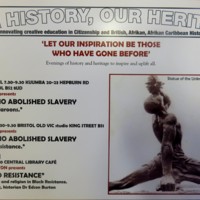
Our History, Our Heritage
Our History, Our Heritage was a black-led Bristol group promoting historical awareness of the contributions of African, African-Caribbean and British peoples in past and present struggles, and in Bristol in particular. Their series of talks and educational initiatives sought to encourage 'creative education in Citizenship and British, Afrikan, Afrikan Caribbean History', taking inspiration from 'those who have gone before'.
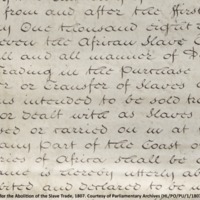
Sticks and Stones Project
The Sticks and Stones Project was led by Northamptonshire Record Office and Northamptonshire Black History Association. A group of students from Kingsthorpe Community College investigated slavery past and present, through historical workshops and a trip to the Houses of Parliament. The focus was on the history of slavery but also learning about forms of modern slavery such as sweatshop labour and trafficking. The students produced a short film and an exhibition to highlight the issues important to young people.
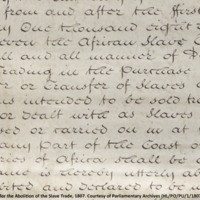
West Wales and the Slave Trade
The Friends of Narberth Museum presented an exhibition which examined the people, places and events in West Wales with links to the transatlantic slave trade and the campaign for abolition. Children from local schools worked with copies of documents and diaries relevant to the Narberth area, and designed their own commemorative plates. Events included a talk on the Underground Railroad and quilting, a children’s writing workshop, and a Deep South supper with music.
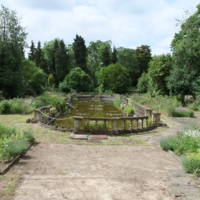
Liberation Song
Easton Lodge is a historic estate in Essex, with gardens open to the public. The Gardens of Easton Lodge Preservation Trust led two projects to mark the bicentenary. Liberation Song involved three local schools working with Grand Union Orchestra to explore the roots of musical instruments and styles, culminating in a community concert. A visual arts project involving seven local schools examined the history of Easton Lodge and trading links during the 18th century. Children decorated and displayed cotton reusable carrier bags and displayed them on yew hedges in the gardens. Connections were made with the story of the 18th century Ghanaian anti-slavery campaigner Ottobah Cugoano and the modern day Fair trade movement.
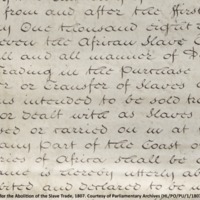
Voices from Africa
To commemorate the bicentenary, St Mungo Museum of Religious Art and Life (with support from the Scottish Museum Council) explored the social and economic legacies of slavery, including racism and cultural stereotyping. The museum worked with members of Glasgow's African and African Caribbean communities on reinterpreting objects from across Glasgow Museums. As part of the project, artist Beth Forde was commissioned to create an artwork to explore some of the issues raised, titled 'The shadow of the object fell upon the ego'. Voices from Africa was part of a year-long programme of lectures, schools events and exhibitions highlighting the life of African communities in Glasgow. This included a photographic project with photographer Roddy Mackay to represent African heritage in Scotland, and a series of free workshops exploring aspects of faith and belief.
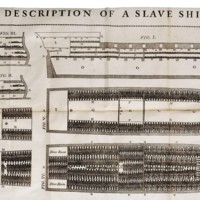
The Print that Turned the World?
The Print that Turned the World? was an exhibition at the London Print Studio, which examined the role played by printmaking in changing public attitudes towards the slave trade and influencing the abolition campaign. The exhibition looked in particular at the influence of the widely publicised print of the slave ship 'Brookes', first published in 1788; the crowded and inhumane conditions depicted had a significant impact on public opinion. The exhibition also examined the role of William Wilberforce in the abolitionist campaign, and the continuation of anti-slavery efforts in modern times. London Print Studio worked with local schoolchildren in creating the exhibition and associated artworks.
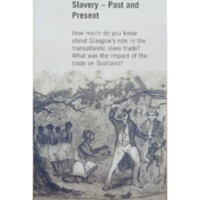
Towards Understanding Slavery: Past and Present
The Towards Understanding Slavery: Past and Present initiative by Glasgow City Council aimed to increase understanding of the human effects of the transatlantic slave trade, and explore its impact on Scotland's national heritage and Glasgow's history. A series of events, exhibitions and education programmes ran across the city throughout 2007. These included an exhibition of William Blake's works relating to the idea of slavery at the Burrell Collection, and a photographic exhibition by Graham Fagen, 'Downpresserer', at the Gallery of Modern Art, examining the cultural heritages of Scotland and Jamaica. There was a series of performances and talks at Kelvingrove Art Gallery and Museum, and events at the People's Palace and Winter Gardens focused on links between Glasgow's tobacco trade and slavery through the family portrait of the 'tobacco lord' John Glassford (there is said to be a figure of a young black man behind Glassford's chair that has been deliberately obscured or painted over). A year-long programme of lectures, schools events and exhibition highlighting the life of African communities in Glasgow took place at St Mungo Museum of Religious Life and Art.
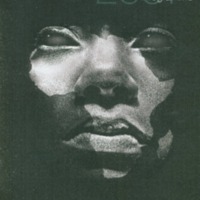
2007 Bicentenary for the Abolition of the Slave Trade Act at the National Maritime Museum
The National Maritime Museum marked the bicentenary with a range of initiatives and events including a new exhibition, a film season, poetry, music, debates, and new publications. A new permanent gallery opened at the museum in winter 2007 exploring Britain's Atlantic empire. A catalogue of slavery-related images, artefacts and documents from the collections of the museum, 'Representing Slavery', was published. The museum also devised a transatlantic slavery trail around Greenwich.
The National Maritime Museum hosted a number of events throughout 2007. The theme of the weekend 23-25 March was 'And still I rise', marked with a series of activities, performances and discussion. On August 23, International Day for the Remembrance of the Slave Trade and its Abolition, the ‘Freedom Festival: Contemporary Commemoration’ event saw a programme of creative events and performances exploring themes around the heritage of enslavement. The museum also offered a range of learning experiences based on its collections. For example, in November, a study session, 'Roots of Resistance: Abolition 1807' examined the roots of resistance and the abolition movement through talks by curators and contemporary artists. Activities for families were based on themes of freedom and carnival. 'The Big Conversation 2007' was a programme of debate and showcasing of diverse projects undertaken by students around the country, organised by the Understanding Slavery Initiative and the Department for Children, Schools and Families.
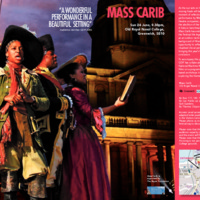
Mass Carib
Mass Carib is a choral performance piece written by Felix Cross. In 2007 it was performed outdoors at the Royal Naval College in Greenwich by Nitro Theatre Company, as a finale to the Greenwich and Docklands International Festival. To accompany the performance, the festival collaborated with the National Maritime Museum and Nitro on a programme of workshops in schools in Greenwich exploring the themes of the production. Mass Carib was written as a Requiem using the liturgical form of the Catholic Mass. It draws on music from West Africa, eighteenth-century Europe and various Caribbean islands. Mass Carib is sung in English, French, Patois, Latin and Yoruba.
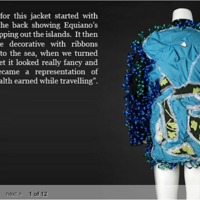
The Equiano Project Culture Clubs
Part of the Equiano Project led by Birmingham Museum and Art Gallery, the Culture Clubs were a series of outreach projects enabling contributions by local schools and community groups to the way Equiano’s story is told and the issues surrounding how his experience is represented. The four groups - Techno Elders, Hockley Youth Project, Deansfield Secondary School and King George V Primary School - worked closely with the project teams and professional artists to produce work based upon Equiano’s life story. Their work featured within the Gas Hall and Soho House exhibitions.
The Hockley Youth Project’s work was displayed in the ‘Unshackled’ exhibition at Soho House in Birmingham, once home of the industrialist Matthew Boulton. Working with visual artist Nicola Richardson, the group produced a series of suits and artworks which explore themes around Equiano’s life, particularly his success as a businessman and entrepreneur.
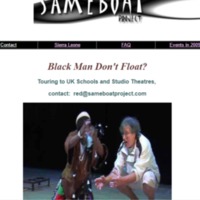
Black Man Don't Float?
Black Man Don't Float? is a play developed by Sameboat Project, a not-for-profit organisation working in collaboration with the Pierian Centre Bristol, Gecko Theatre Ipswich, and the Arrow Project at University College Plymouth. Set in the ocean off West Africa, a white yachtsman collides with an African economic migrant who is trying to reach the Canaries in a home-made vessel. They have to co-operate to survive, but their differences lead to confusion. Performed by West African performer Ayodele Scott and UK-based writer and performer Martin Hubbard, Black Man Don't Float? was shown in the UK and then travelled to Sierra Leone. The show was accompanied by a workshop entitled Fair Share, exploring issues around the fair sharing of resources, and the challenges facing developed and developing nations in their negotiations about aid, trade and the exploitation of natural resources.
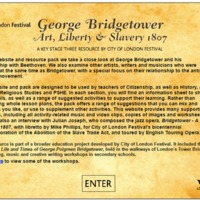
George Bridgetower: Art, Liberty and Slavery 1807
In this website and Key Stage 3 Resource Pack, the City of London Festival examined the work of the Afro-European violinist George Bridgetower (1778-1860) and, in particular, his relationship with the composer Ludwig van Beethoven. The resource also explored the role of other artists, writers and musicians who were active at the same time as Bridgetower, with a special focus on their relationships to the anti-slavery movement. The website provided music, video clips and worksheets, alongside an interview with Julian Joseph, composer of the jazz opera Bridgetower - A Fable of 1807, toured by English Touring Opera. The resource was part of a broader education project developed by City of London Festival, which included the exhibition, 1807: The Life and Times of George Polgreen Bridgetower, held in the walkways of London's Tower Bridge. The education project also included storytelling, music and creative writing workshops in secondary schools.
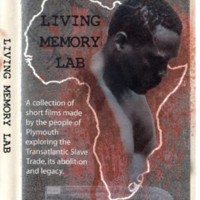
Living Memory Lab
The Living Memory Lab was a two-year project in which people from local communities of Plymouth made three-minute films on the subjects of slavery and abolition and local connections to the slave trade. A series of short training courses in basic film-making were offered as part of the project. The project was a partnership between Plymouth and District Racial Equality Council, BBC South West, the community arts agency Creative Partnerships, in collaboration with Plymouth City Museum and Art Gallery. The DVD was made freely available for use as a teaching aid and community resource.
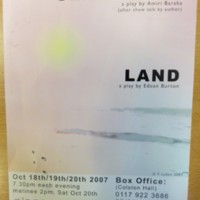
Slave Ship and Land
Two plays, Slave Ship by Amiri Baraka and Land by Edson Burton, were presented in Bristol by Say It Loud, a multicultural arts development organisation. Slave Ship was first performed in the United States in 1967. Land was written especially for the bicentenary project. In conjunction with the project, Say It Loud organised drama workshops on the subject of slavery in Bristol schools.
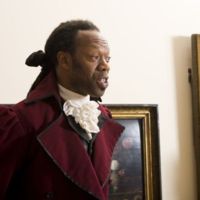
Breaking Chains - Sheffield Civil Rights
Breaking Chains - Sheffield Civil Rights was a project by Sheffield Galleries and Museum Trust to look at the slave trade and to celebrate Sheffield’s heritage by exploring the role local campaigners played in securing workers' rights. The resources targeted Key Stage 2 pupils. There was a particular focus on the visit to Sheffield by the African abolitionist Olaudah Equiano in 1790. Actor Joe Williams played Equiano in a dramatisation still available to view on the teaching resource. Featured here are some of the downloads available.
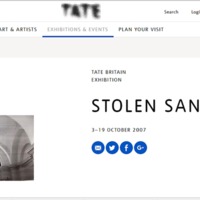
Stolen Sanity
In 2007 the artist Faisal Abdu'Allah was commissioned by Tate Britain to work collaboratively with a group of young people from Park High School in Harrow and St George's Roman Catholic School in Westminster to explore ideas related to the commemoration of the 1807 Abolition Act. The group engaged with creative research and artistic processes to produce narratives capturing their personal viewpoints on the themes of freedom of expression, liberty, revolution and slavery. The project Stolen Sanity resulted in a series of large scale photographic portraits that were displayed in the main galleries of Tate Britain. The project integrated the factual historic time line of Tate Britain's display, 1807: Blake, Slavery and the Radical Mind, with fictional personal reflections through audio and visual art.
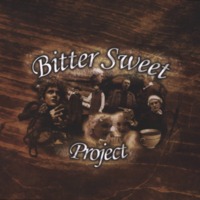
Bitter Sweet Project
Campaign! Make an Impact was a British Library developed programme that used history to inspire young people into active citizenship. The Bitter Sweet Project involved students from Easingwold School engaging with collections from the British Library, Hull Museums Service and Harewood House. Year 9 students studied the 1807 campaign to abolish the transatlantic slave trade and then created a graphic novel about Harewood House’s links to the sugar trade.
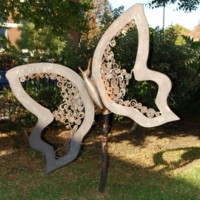
The Freedom Sculpture
The Freedom Sculpture was conceived by Mary Thompson, a teacher at Dog Kennel Hill Primary School in East Dulwich, as a way for the school to mark the bicentenary. Year 6 pupils worked with Kevin Boys, a blacksmith from Surrey Docks City Farm, to translate their ideas of freedom into a visual image. A butterfly was chosen to represent the concept of freedom. Kevin Boys made the butterfly's wings on a mobile forge in the school playground, and Year 5 children designed patterns to place inside. The Freedom Sculpture was opened in the school grounds in November 2008 by Shami Chakrabarti of Liberty, the civil liberties advocacy group.
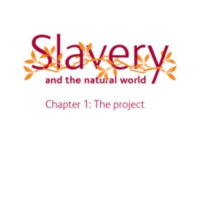
Slavery and the Natural World
In consultation with local community groups, in 2007 the Natural History Museum commissioned new research into its collections that link slavery and the natural world. The research uncovered experiences of enslaved people and the use of plants in their everyday life, as food, medicines and poisons. It also examined the complex relationships between enslaved people and naturalists exploring newly-colonised lands. The museum ran a series of public events, co-hosted by Race on the Agenda, which aimed to bring the historical, scientific and public viewpoints together. It created online educational resources on themes such as Commercial Plants, Everyday Life, Diet and Nutrition, and Resistance. The museum also developed cross-curricular ideas for school lessons in Science using the context of slavery, looking at foods across different cultures, for example.
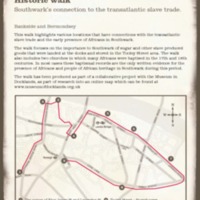
Southwark and Abolition
Southwark Council created two online resources to commemorate the bicentenary. A historic walk, produced in collaboration with the Museum of London Docklands, highlighted locations connected with the slave trade and the early presence of Africans in Southwark. A timeline detailed key dates and events that led to the transatlantic slave trade, including Southwark's local connections to the trade and its abolition. The Cuming Museum in Southwark also held an exhibition, 'Lost and Found'.